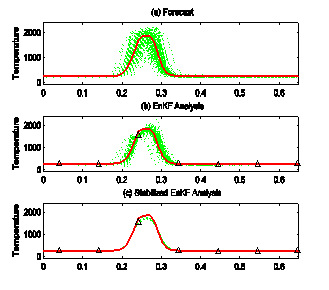Difference between revisions of "DDDAS: Data Dynamic Simulation for Disaster Management"
| Line 6: | Line 6: | ||
</td> | </td> | ||
<td rowspan="4" style="padding: 0in 5.4pt; width: 261pt; height: 41.4pt;" valign="top" width="435"> | <td rowspan="4" style="padding: 0in 5.4pt; width: 261pt; height: 41.4pt;" valign="top" width="435"> | ||
| − | + | [[File:Nuggett_fig01.gif]] | |
</td> | </td> | ||
</tr> | </tr> | ||
Revision as of 19:19, 8 March 2010
|
Project Title: |
|
|
Investigators: Jan Mandel, Anatolii Puhalski, Craig Johns, Leopoldo P. Franca, Craig C. Douglas, Janice L. Coen, Anthony Vodacek, Robert Kremens, Guan Qin |
|
|
Institution: |
|
|
Website: |
Description of Graphic Image: |
|
Project Description and Outcome |
|
|
Ideas:The goal of this project is to provide a data driven real-time atmosphere-wildfire model with data acquired from weather data streams, sensors on location, and airborne images. The project is developing new data driven assimilation methods for highly nonlinear problems. The model consists of an ensemble of simulation. The data assimilation methods modify the model from data that arrives while the model is running.<o:p></o:p> |
|
|
Tools:<o:p></o:p>A data driven massively parallel software framework was developed to link data assimilation algorithms, data acquisition, and an ensemble of simulations. |
|
|
<img alt="Figure 2" src="images/documents/figures/nuggett_fig02.jpg" v:shapes="_x0000_i1026" width="576" height="433" /> |
|
Description of Graphic Image: |
